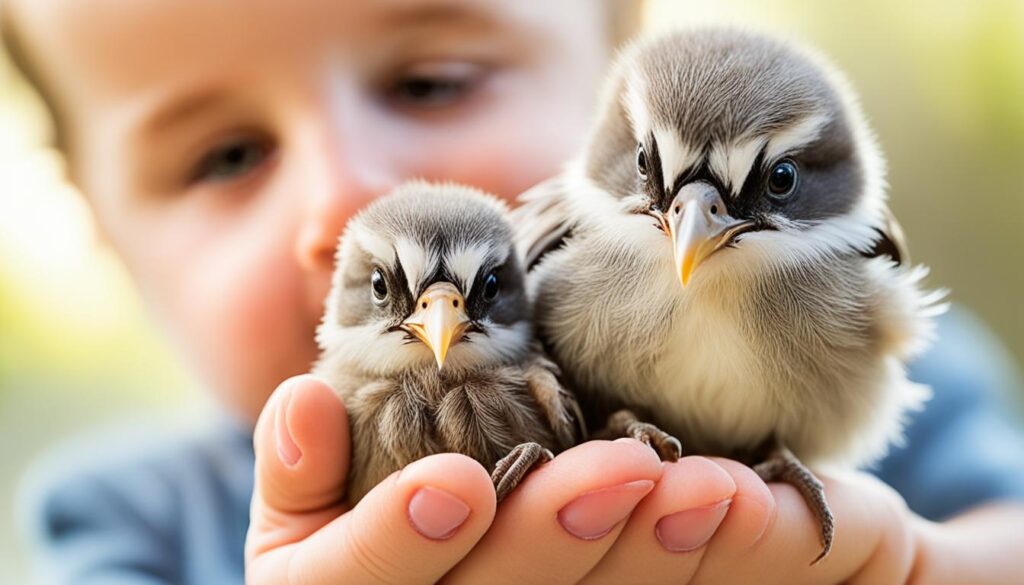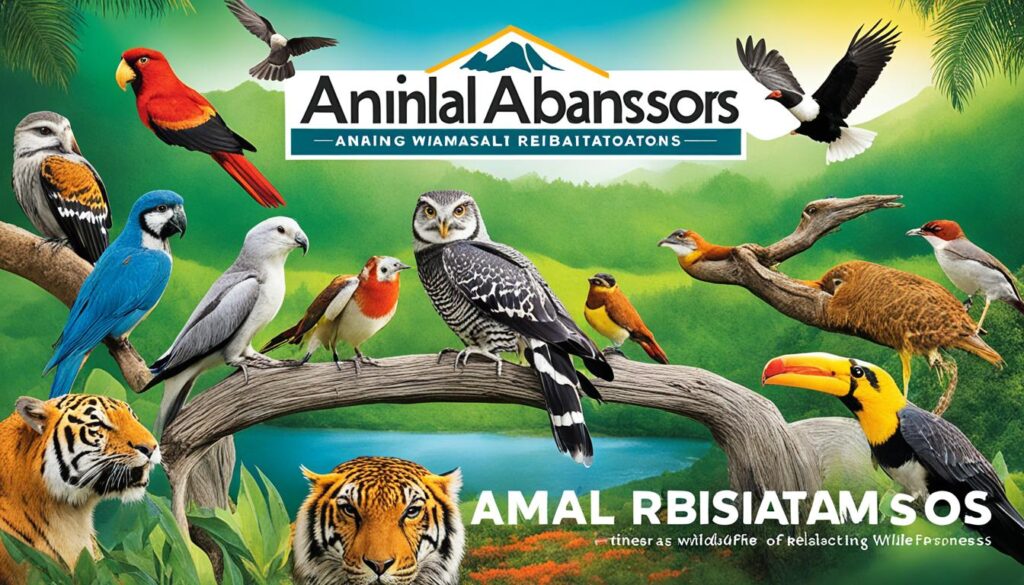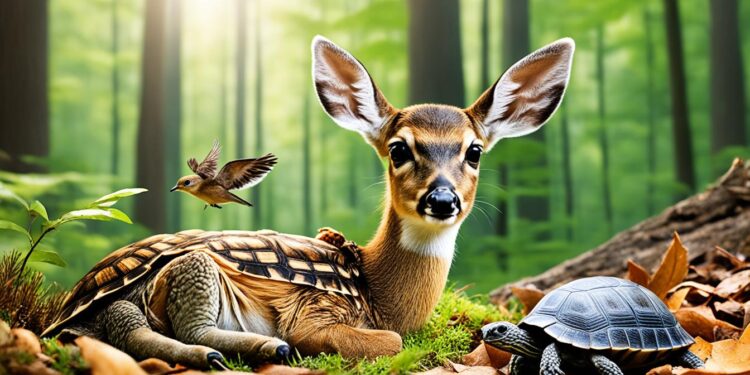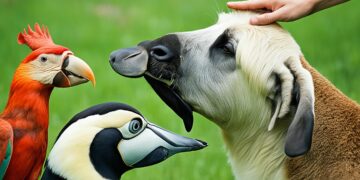Wildlife rehabilitation is key to keeping our ecosystems balanced. It helps injured, orphaned, or lost animals. This work is crucial for the survival of endangered species and keeping our planet diverse.
At the core of wildlife rehabilitation is the understanding that all living things are connected. By healing injured or lost animals and returning them to the wild, these programs keep ecosystems healthy. This helps animals and protects entire species, showing how vital animal rehabilitation is for the environment.
Preserving Biodiversity: The Crucial Role of Wildlife Rehabilitation
Wildlife rehabilitation centers are key to saving biodiversity and fixing ecosystem balance. They rescue, treat, and release injured or orphaned animals. This helps keep vulnerable species and their populations alive. Their hard work is crucial for keeping diverse life forms, which are vital for healthy natural environments.
Understanding the Importance of Species Conservation
Keeping different species alive is key to our planet’s health. When species numbers go down, ecosystems can collapse, harming the natural world. Wildlife rehab programs fight these threats by giving care to endangered animals. This boosts their survival chances and helps them live in their natural homes.
How Rehabilitation Centers Support Ecological Balance
Rehabilitation centers are vital for keeping ecosystems healthy. They help injured or orphaned animals recover and return to the wild. This not only helps the animals but also the whole ecosystem. By keeping important species around, they protect biodiversity, which is crucial for our planet’s health.
Ethical Considerations in Animal Care
Wildlife rehabilitation centers are deeply committed to animal welfare and ethical practices. They know they have a big responsibility in helping vulnerable wildlife. They aim to provide the best care possible during the rehabilitation process.
Ethical practices in rehab are based on respecting animal rights and believing all creatures deserve kindness. Specialists work hard to make sure animals get a safe, stress-free place. They focus on their unique needs, from reducing human contact to making special enclosures.
Following strict rules and guidelines is key in ethical animal care. These rules come from groups that look after animal welfare. Centers follow these guidelines closely. They cover things like medical care, food, fun activities, and how to release animals back into the wild.
Looking after animals also means thinking about their feelings and minds. Specialists know that bad experiences can really affect wildlife. They use special methods to help animals feel better. This way of caring for animals, which looks at their body, mind, and heart, is what makes the best rehab programs.
By focusing on animal welfare and ethical rehab, centers help protect endangered species. They also teach us to be more caring and respectful towards nature. Their hard work and commitment inspire others to help protect our planet.

The Science Behind Successful Rehabilitation
Wildlife rehabilitation is built on a strong base of veterinary science and the unique needs of animals. Centers have expert vets and staff in wildlife medicine. They give top-notch care and treatment to animals that are hurt or lost.
Veterinary Expertise in Wildlife Medicine
Dealing with wild animals needs special knowledge and skills. Rehabilitation vets know how to handle a variety of injuries and illnesses in wildlife. They use the newest medical tools and new treatments to help animals recover fully.
Specialized Facilities and Enclosures
Good rehabilitation also means having special places and cages that feel like the animals’ natural homes. These places help animals stay healthy both physically and mentally while they get better. From big aviaries for birds to large outdoor spaces for mammals, every detail is thought out to help animals go back to the wild safely.
Combining expert vet care with special places is key to helping wildlife survive and thrive again. This kind of support is vital for keeping our natural world healthy and diverse.
Animal Ambassadors: Raising Awareness Through Rehabilitation
Wildlife rehabilitation centers are key players in animal welfare and conservation. They use educational programs to reach out to communities, schools, and the public. These programs share the stories of animals in care, teaching people about wildlife and conservation.
These centers have “animal ambassadors” – animals that show why protecting wildlife is important. Visitors can learn about the animals’ challenges and the efforts to help them. This hands-on learning encourages people to care for the environment and get involved in conservation.
Educational Outreach Programs
Rehabilitation centers offer many educational programs to teach about wildlife and conservation. They have interactive presentations, tours, workshops, and camps for all ages. These programs aim to inspire people to care for animals and the environment.
These efforts reach beyond the center, working with schools, community groups, and organizations. This helps spread the message of wildlife conservation and animal welfare to more people.

The impact of these programs goes beyond helping individual animals. They connect people with nature, helping to create the next generation of conservation leaders. This inspires a lifelong commitment to protecting wildlife and our planet’s diversity.
The Psychological Benefits of Helping Wildlife
Helping wildlife can deeply affect both animals and humans. It builds empathy, compassion, and a closer bond with nature. This helps improve mental and emotional health.
Fostering Empathy and Compassion
People helping injured or orphaned animals gain a new understanding of their struggles. This hands-on work grows empathy. It makes people see the world from the animals’ perspective.
This connection sparks compassion. It encourages people to protect nature more. They become more mindful of their actions.
Caring for wildlife boosts self-esteem and purpose. Volunteers see animals recover and feel fulfilled. They know their work has made a difference.
Wildlife rehabilitation also brings mental health benefits. It lowers stress, anxiety, and depression. Animals’ calming presence and the sense of purpose help overall well-being.
It helps develop empathy and compassion for nature. This enriches lives and helps protect our ecosystems.
Success Stories: Inspiring Tales of Rescued Animals
In the world of wildlife rehabilitation, the real heroes are the animals. They are creatures that have overcome tough times and come out stronger. These stories of animal rescue and wildlife comeback give us hope. They remind us to protect our natural world.
Bella, a young black bear cub, was found alone and hungry in a far-off forest. Thanks to a local wildlife center, she got the care she needed. Bella was nursed back to health and released into the wild. Now, she is a key part of her bear community.
In the Pacific Northwest, a team saved a bald eagle caught in fishing line. After a lot of care, the eagle was released back into the sky. This shows the strength and power of conservation stories.
These stories highlight the hard work of wildlife rehabilitation centers. They give animals a second chance at life. Their work helps heal and reintroduce animals into their homes. This not only balances nature but also makes us appreciate the world around us.
Combating Illegal Wildlife Trade and Poaching
Wildlife rehabilitation centers are key in fighting the illegal wildlife trade and poaching. They work with law enforcement and support conservation efforts. This helps to help animals caught in these illegal activities and fights against threats to nature.
The Role of Rehabilitation Centers in Law Enforcement
Rehabilitation centers team up with law enforcement to catch wildlife criminals. They help identify animals seized during raids or at borders. This info is key in building cases against those who harm wildlife.
These centers also help animals recover and return to the wild. They give special care and prepare animals for their natural homes. This way, animals hurt by the illegal trade and poaching can heal and thrive again.
Rehabilitation centers don’t just work with the law. They also join forces with others to stop the illegal wildlife trade and poaching. They help spread awareness, train police, and work with groups to break up illegal wildlife markets.
Wildlife rehabilitation centers are making a big difference in the fight against illegal wildlife trade and poaching. They work with law enforcement and focus on conservation. This helps protect endangered species and keeps our ecosystems healthy.
Volunteering Opportunities: Get Involved in Wildlife Rehabilitation
Are you passionate about protecting and preserving wildlife? The world of wildlife rehabilitation volunteering is perfect for you. Centers across the U.S. offer many ways to help with conservation efforts.
There are many ways to help, from caring for animals to helping with office tasks. By volunteering, you can assist with the daily care of injured or orphaned wildlife. This includes giving them the medical care they need to heal and live in the wild again.
If you’re into conservation, there are roles for you too. Volunteers can help with keeping the center clean, raising money, and teaching people about wildlife. Sharing stories of rescued animals and teaching the community is key. It helps spread the word and gets more people to support wildlife rehabilitation.







